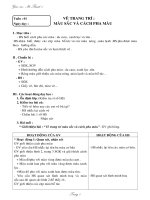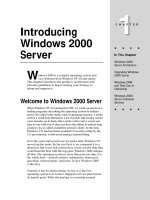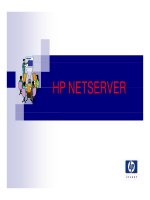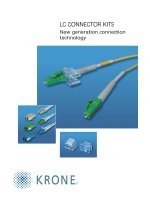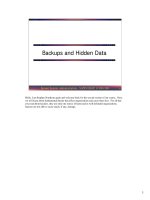Tài liệu Basic Troubleshooting Process 4 doc
Bạn đang xem bản rút gọn của tài liệu. Xem và tải ngay bản đầy đủ của tài liệu tại đây (23.96 KB, 4 trang )
1-4 Semester 8 Internetwork Troubleshooting - Lab 1.2.9.4 Copyright 2001, Cisco Systems, Inc.
Lab 1.2.9.4: Basic Troubleshooting Process 4
WAN Network 2
192.168.0.96 /30
WAN Network 1
192.168.0.100 /30
SanJose1
Objective
Apply the basic troubleshooting model from the last lab to a simple network problem.
To perform this lab read the scenario to make sure that you understand the problem
from the user’s standpoint, follow the lab steps, and apply any basic troubleshooting
skills that you learned in earlier Cisco courses. Remember that for this lab we are
concentrating on the troubleshooting model, not any particular IOS commands.
Scenario
As far as you know the SanJose1 router is functioning fine. There are no user
complaints. You want to get some interface counts from the SanJose1 router.
Step 1
Configure a workstation with the following settings and attach it to the Fast Ethernet
or Ethernet interface on any router:
IP address: 192.168.0.34 (or any valid host in subnet 192.168.0.32 /27)
Subnet mask: 255.255.255.224
Default Gateway: 192.168.0.33
Note: This is the same host configuration from the last lab.
Use the same steps as the last lab to clear and paste the configuration file Lab1-2-9-
4-SanJose1BrokenConfig.txt into any Cisco IOS-based router with at least one
Ethernet / Fast Ethernet interface.
2-4 Semester 8 Internetwork Troubleshooting - Lab 1.2.9.4 Copyright 2001, Cisco Systems, Inc.
Note: The “load” file is configured to support many routers with various interfaces,
so do not be alarmed if you see error messages scroll by.
The WAN interfaces are loopback interfaces so that this lab can be done with any
single router (800 through at least a 4700) running the Cisco IOS. You can therefore
assume that these interfaces are up.
Step 2
1. Telnet into the SanJose1 router. You should encounter a problem. Define
the problem you are experiencing.
2. Console into the SanJose1 router. You should encounter a problem. Define
the problem you are experiencing.
Step 3
3. Gather the facts about the situation at hand. Is the router functioning? How
would you know?
4. If the router is working how might you try to gain access to see what is
going on?
5. It is possible to get to the router. Which commands might you use to
determine the problem?
6. Try using the show running-config command. Does it help?
3-4 Semester 8 Internetwork Troubleshooting - Lab 1.2.9.4 Copyright 2001, Cisco Systems, Inc.
If you cannot scroll back to see your show running-config output, try using
HyperTerminal and turning the file capture feature on before you log on and then do
your show running-config. You will need to be quick.
7. What is the likely problem?
Step 4
8. Examine the facts you have just listed. Based on your observations,
consider the possible causes of the problem.
Step 5
9. Create an action plan to solve this problem.
Step 6
Implement the action plan and attempt to fix the problem!
10. Observe the results of your implementation. Did it fix the problem? List
your results and observations below.
Step 7
If your solution did not fix the problem, undo your changes and repeat the process.
Hint: If you are unable to type the corrections in, try copying the appropriate
sections to Notepad and edit the exec-timeout 0 2 lines to exec-timeout 10
4-4 Semester 8 Internetwork Troubleshooting - Lab 1.2.9.4 Copyright 2001, Cisco Systems, Inc.
0. Add a config t to the beginning of your changes and then you need only login,
go to privilege mode, and paste to host. The code might look like this:
config t
line vty 0 4
exec-timeout 10 0
If you are not familiar with the exec-timeout command, it sets the no-activity
timeout for an interface. While it might not make sense on a production router, it can
save some frustration while working on labs. The first value is minutes and the other
is seconds. Using exec-timeout 0 0 will prevent any timeout.
11. If your solution did fix the problem, document the results below.
Reflection
12. Could you have used the AUX port in this case to bypass the problem?
